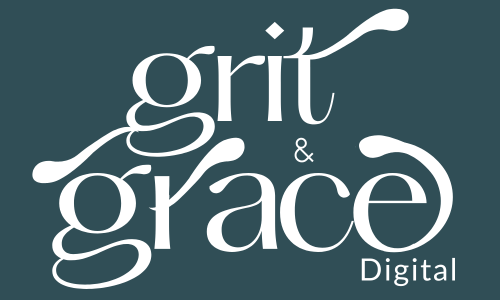I saw this coming. A few months ago, I KNEW storytelling was going to be the “IT” marketing strategy for 2025.
How? Because people are SO DESPERATE for a connection.
Rewind to three weeks ago, and I stumbled across a big-name “guru” who finally said it out loud: “Storytelling is going to be the big marketing strategy for 2025.”
I kid you not, within hours, I saw post after post—predictions flying left and right—ALL saying the same thing.
Here’s the thing: STORYTELLING isn’t a fad. It’s not the next shiny strategy to latch onto until something newer comes along. It’s a marketing tool that has been around forever—long before Instagram, TikTok, or even Google. It’s the single most effective way to build an authority brand. And when done right, it’s the easiest tool you’ll ever have in your toolkit.
But let’s take a step back. Why is storytelling blowing up now?
Why Storytelling Marketing Resonates So Deeply With Your Audience
We live in a noisy world. Algorithms, email campaigns, reels, ads—it’s overwhelming. Everyone’s vying for attention, and your audience is tired. Tired of being sold to, tired of flashy promises, tired of feeling like just another number.
What they crave? Connection.
Storytelling cuts through the noise because it’s human. When you share your story, you’re not just marketing—you’re building a bridge. You’re saying, “I see you. I understand where you’re coming from. And I’ve walked this path too.”
Take a moment to think about the brands you love. Chances are, they don’t just sell products or services—they make you feel something. Apple? They’re not just selling tech; they’re selling innovation and empowerment. Nike? It’s not about shoes—it’s about resilience and chasing greatness.
This is what storytelling does. It taps into emotions, values, and shared experiences. It connects on a level that no algorithm hack ever could.
How Storytelling Marketing Builds Authority and Deepens Connection
Let me stop you right here because I know what you’re thinking: “Alisha, I’m already relatable! I share my story all the time!”
And that’s great. But here’s the difference between being relatable and being transformative:
- Relatability is when your audience thinks, “Wow, she gets me.”
- Transformation is when they think, “Wow, she can help me.”
Your story isn’t just about where you’ve been—it’s about where your audience can go with you as their guide.
For example, I used to think sharing my PCOS journey—how I lost weight, detoxed from sugar, and finally conceived my daughter—was enough. And it worked to a point. My audience resonated with me. But after growing my social media account to over 30K followers I wasn’t able to turn those connections into paying clients because I wasn’t showing them how my journey could lead to their transformation. (HUGE lesson learned!)
Storytelling isn’t just about what happened. It’s about tying your story to the problem your audience is struggling with and showing them the solution.
The Real Power of Storytelling Marketing
When you use storytelling to build your authority brand, you’re doing three things:
- Building Trust: You’re showing your audience you’ve been in their shoes and have the expertise to help.
- Creating Connection: Stories make you memorable. They make people feel seen, heard, and valued.
- Positioning Yourself as the Guide: Your audience doesn’t need another hero—they need someone to guide them toward their own success. This is the sweet spot that sales happen in!
Let me tell you why this matters:
Last year, I spent months creating content that was “pretty good.” I posted about my experiences, my wins, and my lessons. But it wasn’t until I started weaving my OWN story into my content in a way that positioned my audience as the hero that things changed.
When I tied my story to THEIR struggles, it clicked. My audience didn’t just see me as relatable—they saw me as someone who could help them solve their problems. That’s the shift.
Why Storytelling Marketing Is the Timeless Strategy
Storytelling has been around since humans first sat around campfires. It’s how we’ve always connected, shared knowledge, and inspired action.
So why does it feel “new” now?
Because the marketing world forgot about connection. Somewhere along the way, marketers started focusing on “hacks” and “funnels” and “engagement rates,” leaving authenticity behind. But now, audiences are demanding more. They want realness, not perfection.
Storytelling works because it’s timeless. It’s not dependent on trends or algorithms. It’s about who you are and the impact you can create.
Step-by-Step: How to Incorporate Storytelling in Your Marketing Strategy Today
If you’re ready to embrace storytelling marketing, here’s where to start:
- Define Your Core Stories: What are the pivotal moments in your journey? These are the stories that connect you to your audience.
- Tie Your Story to Your Audience’s Pain Points (and even better their DESIRES): What are they struggling with? What do they truly want and how does your story show them a way forward?
- Make Your Audience the Hero: Share your wins, but focus on how your experiences can empower and guide them.
- Be Consistent: Infuse storytelling into all your content—your posts, emails, captions, and offers.
Final Thoughts: Why Storytelling Marketing Will Define Your Success in 2025 and Beyond
Storytelling isn’t just another strategy to add to your marketing plan. It’s the heart of your brand. It’s what makes your message unforgettable and your audience loyal.
So no, storytelling isn’t just a 2025 fad—it’s a skill, a tool, and a connection-builder that will carry your business far beyond the trends.
If you’re ready to build an authority brand rooted in connection and trust, get started.
Your story is waiting to be told—and your audience is ready to hear it

